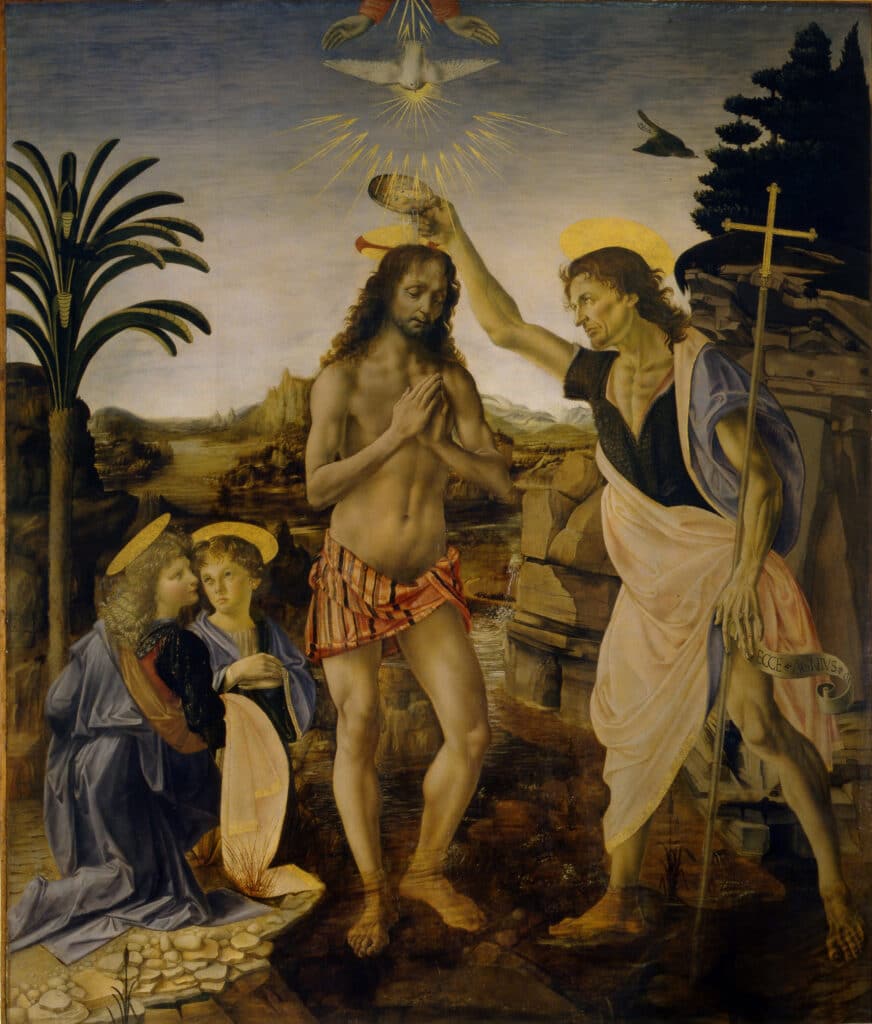
Verrocchio, Master of Leonardo da Vinci: Exhibit at Palazzo Strozzi
Andrea del Verrocchio (Firenze, 1435-Venezia, 1488) was the master of Leonardo da Vinci. But also of Ghirlandaio, Botticelli and Perugino. In other words, he was the master of Renaissance Florence. He was artist and symbol of the Renaissance in Florence. From March 9 to July 14, 2019 Palazzo Strozzi was celebrating Verrocchio, master of Leonardo da Vinci. It is a giant exhibit showing 120 paintings, sculptures, and drawings from the most important museums and collections in the world, like the Metropolitan Museum of Art in New York, the Louvre in Paris, the Rijksmuseum in Amsterdam, the Victoria and Albert Museum in London, and the Uffizi Gallery in Florence. The exhibit, along with a special section on display at the Bargello Museum, put together for the first time celebrated masterpieces by Verrocchio and some of the most famous artists from the mid to late 1400s with ties to his workshop, such as Domenico del Ghirlandaio, Sandro Botticelli, Pietro Perugino and Leonardo da Vinci. Some works on special loan, and the possibility to make unprecedented comparisons between them, make it possible to retrace Leonardo’s training and collaboration with the master.
The curators of the exhibit are Francesco Caglioti and Andrea De Marchi, two of the biggest experts on 15th century art. It is ranked as one of the most important events of the Leonardo celebration in 2019. It was also the first retrospective ever dedicated to Verrocchio. Besides, it features some of Leonardo’s earliest pieces. Visitors could see his works from artistic period in Florence from 1460 to 1490, during the era of Lorenzo the Magnificent.
Verrocchio and 15th century’s Florence
No one like Andrea del Verrocchio shaped art in Florence during Lorenzo the Magnificent’s time. He was trained as a goldsmith and learned sculpting with Desiderio da Settignano and in Donatello’s workshop. He was considered a top bronze sculptor of his time. Moreover, he practiced drawing and was also an achieved painter. He was a point of reference with and without his fervid workshop at just over thirty years old. His style laid down the path for Mannerism. Praised by his contemporaries, he was criticized by Giorgio Vasari for his excessive studying and formality, as well as his lack of portraying the feelings of his subjects. His legacy was enormous — his style reached Umbria, Rome, and Venice. His talent would later influence even Raphael and Michelangelo. As a sculptor Verrocchio tried out daring techniques like in the bronzes for the Incredulity of Thomas (from which came the term “doubting Thomas”) for Orsanmichele Church (the church of thee medieval Guilds). Furthermore, he made the group of equestrian statues of Bartolomeo Colleoni, for which he remained in Venice until his death in 1488. Some doubt arose about his being a great painter because his students had completed his two major works – The Baptism of Christ in the Uffizi and the Piazza Madonna in Pistoia. Also, how could Perugino, Leonardo, Ghirlandaio, Bartolomeo della Gatta and Lorenzo di Credi have learned from him if he had not taught them by example? The exhibit focused on the artists, but it was also the fresco of an entire era.
Verrocchio, master of Leonardo da Vinci

The bond created between young Leonardo and the affirmed painter and sculptor Andrea di Michele di Francesco di Cione, called Verrocchio, began and grew thanks to Leonardo’s father. It was Sir Piero, an important notary, who had shown his son’s drawings to the famous master. Aware of Leonardo’s extraordinary talent, Verrocchio decided to bring him on as an intern in his workshop in Florence (1462).
Since Leonardo was the illegitimate son of Sir Piero and a farmer girl from Vinci (a village in the Tuscan countryside), he was not allowed to practice the same profession as his father. Thus he was sent to Verrocchio’s workshop to learn a trade with which he could be accepted into one of the most famous guilds of Florence that united artisans from the same discipline.
Young interns in Verrocchio’s Florentine workshop could learn painting, sculpture, and especially drawing. Some of his students besides Leonardo included Botticelli, Ghirlandaio (Michelangelo’s master) and Perugino (Raphael’s master). Young Leonardo immediately showed his prodigious talent. Andrea del Verrocchio rarely tried to hide his predilection for Leonardo. Actually, he had him participate in painting some of the master’s important works, like the celebrated Baptism of Christ, an oil and tempera painting created between 1474 and 1475 and now housed in the Uffizi Gallery. Come discover Leonardo’s masterpieces with us at Uffizi Gallery with our private tour of the museum!
